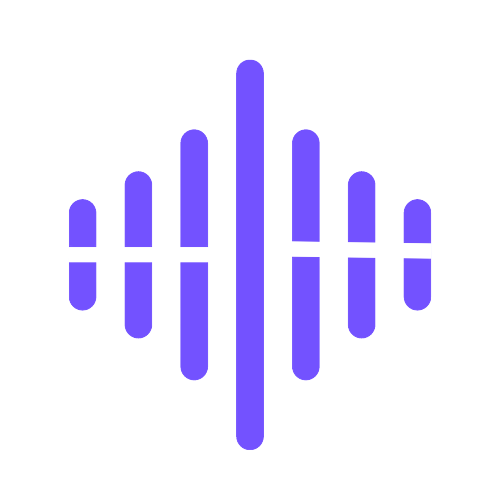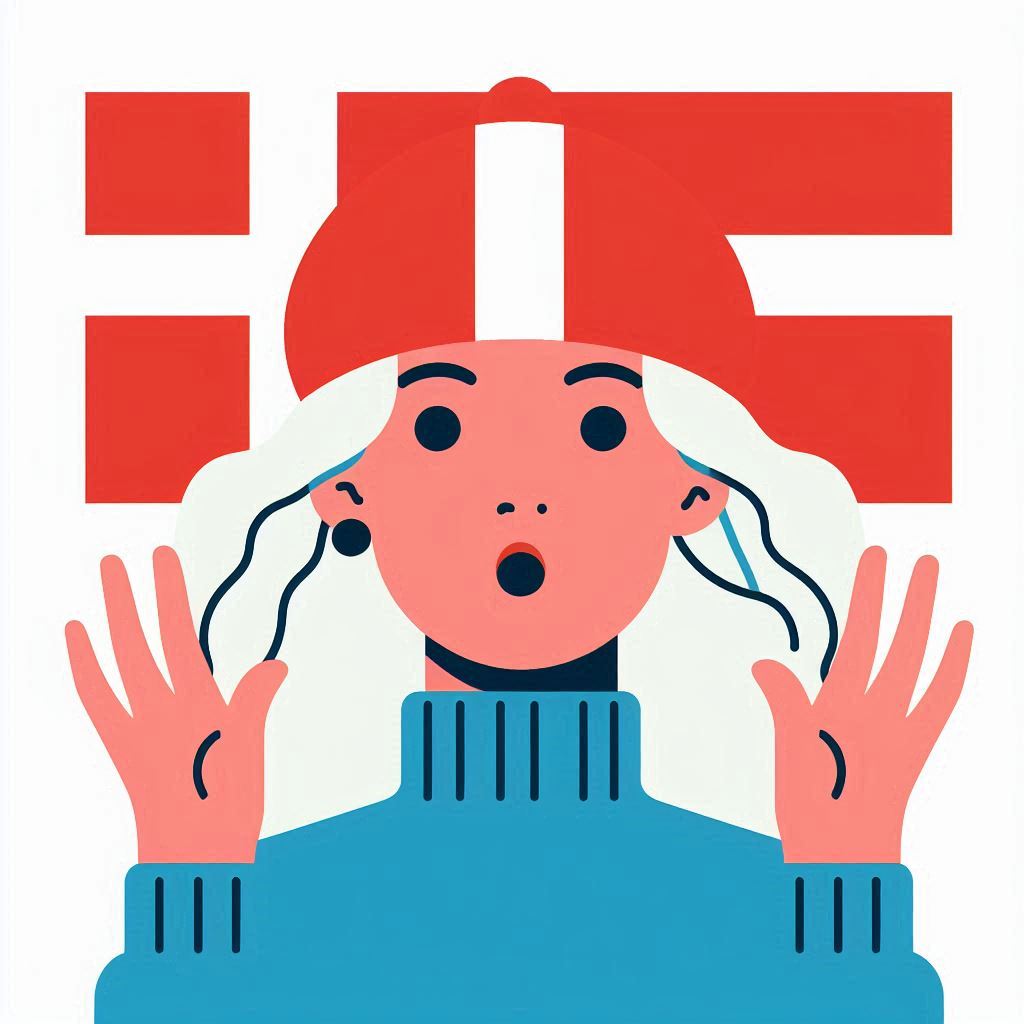
Voxify
Danish Text to Speech
Effortlessly set up and deliver immersive audio experiences, Voxify has over 450 voices available to fit any of your needs, and you can control everything about the narration - pitch, speed and emotion. Great for content creators, podcasters and educators who are looking to up their voiceover quality.

Christel
Denmark
Introducing
Danish Text to Speech: Essential Guide 2025
7.5 million users worldwide harness text-to-speech technology to create AI-powered videos. The technology now powers over 80 languages across 100 dialects, making Danish text to speech solutions increasingly vital for developers building multilingual applications.
Jeppe
Denmark
Christel
Denmark
Jeppe
Denmark
Ready to dive in?
Start creating with realistic voices.
Want reliable Danish TTS capabilities that sound natural while maintaining peak efficiency? Modern text to voice solutions deliver 5x faster production compared to traditional video creation methods. Your options range from basic Danish TTS implementations to sophisticated voice cloning that replicates specific voices with remarkable authenticity.
Ready to master Danish Text to Speech? This guide equips you with everything needed for successful implementation - from fundamental API integration to advanced techniques for creating natural-sounding Danish speech. Let's build voice experiences that truly connect with Danish audiences.

Understanding Danish Text to Speech Technology
Danish text-to-speech technology faces unique challenges due to the language's distinct phonetic landscape. Danish sounds differ markedly from English or German, demanding specialized development approaches.
How Danish TTS differs from other languages
What makes Danish pronunciation truly unique? The answer lies in several distinctive features. The Danish "stød" - a glottal stop - creates momentary vocal cord closure during vowel sounds. This subtle yet crucial element challenges TTS systems striving for natural speech production.
Danish vowels paint a complex picture:
- 20 distinct vowel sounds (double the English inventory)
- Front rounded vowels rare in other languages
- The distinctive "soft d" (blødt d) phoneme
- Complex vowel reduction patterns in everyday speech
Speech patterns add another layer of complexity. Danish speakers employ significant vowel reduction and consonant softening, particularly in unstressed syllables. The language's characteristic "sing-song" quality sets it apart even from neighboring Scandinavian languages. Voxify's engines master these intricate patterns, delivering authentic Danish output.
Key components of Danish TTS systems
Modern Danish TTS architecture combines sophisticated components:
Front-end processing:
- Text normalization for numbers and symbols
- Part-of-speech analysis
- Danish spelling to phonetic mapping
- Rhythm and intonation prediction
The acoustic modeling stage converts linguistic data into speech parameters. While older systems relied on pre-recorded speech fragments, today's solutions harness statistical and neural approaches. Deep learning has elevated Danish TTS quality through end-to-end neural models. These systems learn text-to-speech relationships directly from data, mastering complex Danish phonological rules automatically.
Backend processing uses advanced vocoders to generate the final audio. These systems model human vocal characteristics with remarkable precision, producing natural Danish speech.
Evolution of Danish voice synthesis
Danish voice technology tells a story of continuous innovation. Early 1980s systems produced robotic speech through rule-based synthesis. While primitive, these pioneers laid crucial groundwork for understanding Danish phonetics.
The technology timeline reveals steady progress:
- 2000s: Concatenative synthesis with recorded Danish voice segments
- Mid-2000s: Statistical parametric synthesis using hidden Markov models
- Current era: Neural TTS with deep learning capabilities
Today's systems showcase remarkable achievements. Voice cloning technology creates custom Danish voices from minimal recordings. Emotional synthesis adds new dimensions - from excitement to empathy - serving diverse applications in education, customer service, and entertainment.
Latest Danish TTS platforms adapt to context in real-time, moving beyond basic pronunciation rules toward genuine language understanding. This smart adaptation ensures natural-sounding speech that responds to meaning and intent.

Top Danish Text to Speech APIs for Developers
Quality Danish voices with straightforward integration paths - these features top every developer's checklist when choosing a text-to-speech API. Which providers deliver the best combination of features and reliability? Let's examine the standout options in this specialized market.
Voxify's Danish voices
Voxify sets industry standards with ultra-realistic Danish voice capabilities. Our REST API transforms written content into natural speech while maintaining minimal latency.
Key advantages for developers:
- Rich voice library - Access multiple Danish options from 450+ total voices, featuring diverse age profiles and gender variants
- Emotional range - Fine-tune audio output from professional presentations to empathetic customer service
- Quick implementation - Deploy Danish TTS with minimal code in your preferred language
Technical excellence shines through precise handling of complex Danish phonology, including the challenging "stød" and soft 'd' sounds. Educational platforms and professional voice assistants particularly benefit from this phonetic accuracy.
Google Cloud TTS Danish capabilities
WaveNet technology powers Google Cloud's mature Danish voice portfolio. Their neural approach yields natural speech patterns with proper rhythm and intonation.
The service features two voices - male and female - in both standard and WaveNet versions. While WaveNet voices cost more and process slower, they achieve superior naturalness. Developers within the Google ecosystem gain seamless integration advantages.
Robust SSML support enables precise pronunciation control - particularly valuable for Danish number formats and non-standard loanwords.
Amazon Polly Danish voices
Polly delivers consistent Danish speech through standard and neural engines. The service currently features one female voice (Naja) with both processing options available.
AWS users benefit from native integration capabilities. Polly excels in text normalization, handling Danish numbers, dates, and abbreviations with remarkable accuracy.
Need to process large text volumes? Polly's batch processing and audio storage features optimize both performance and costs for text-heavy applications.
Microsoft Azure Danish TTS options
Azure brings versatility with three Danish voices - two female, one male. Their neural versions produce notably natural prosody patterns.
Standout features include:
- Advanced text preprocessing for compound nouns
- Adaptive speaking styles from casual to formal
- Seamless language switching across Scandinavian options
- Real-time streaming for responsive applications
Which Danish TTS API best fits your project? Consider these factors:
- Integration requirements
- Cost structure
- Scalability needs
- Existing technology stack
Each platform brings unique strengths to match specific development scenarios.

Implementing Danish TTS in Your Applications
Ready to add Danish voice capabilities to your project? Let's explore proven integration approaches that work across web platforms, mobile apps, and desktop software. Each implementation path offers unique advantages for different development scenarios.
Basic implementation with REST APIs
REST APIs stand as the most flexible foundation for Danish text-to-voice integration. Start by securing API credentials through your chosen provider's developer portal. Voxify's portal grants immediate access to our premium Danish voice collection.
Here's a streamlined implementation using Voxify's API:
// Example: Basic Danish TTS implementation with Voxify
const axios = require('axios');
async function generateDanishSpeech(text) {
try {
const response = await axios.post('https://api.voxify.com/v1/speech', {
text: text,
language: 'da-DK',
voice: 'Astrid', // Female Danish voice
format: 'mp3',
speed: 1.0
}, {
headers: {
'Authorization': 'Bearer YOUR_API_KEY',
'Content-Type': 'application/json'
}
});
return response.data.audio_url;
// Use code with caution.
} catch (error) {
console.error('Error generating Danish speech:', error);
}
}Need precise pronunciation control? SSML tags help handle special cases:
<speak>
Det er <phoneme alphabet="ipa" ph="ˈvɛɐ̯li">vejret</phoneme> i dag.
</speak>WebSpeech API for Danish voices
Browser-based projects? WebSpeech API offers a dependency-free solution with zero API costs. Perfect for basic interface feedback and simple voice interactions.
Quick implementation guide:
function speakDanish(text) {
const synth = window.speechSynthesis;
const utterance = new SpeechSynthesisUtterance(text);
const voices = synth.getVoices();
const danishVoice = voices.find(voice =>
voice.lang === 'da-DK'
);
if (danishVoice) {
utterance.voice = danishVoice;
}
utterance.lang = 'da-DK';
synth.speak(utterance);
}Browser support varies significantly:
- Chrome/Edge: Full Danish voice support
- Safari/Firefox: Limited voice options
- Quality: Basic compared to dedicated APIs
Pro tip: Combine WebSpeech for interface elements with Voxify's API for premium content delivery.
Mobile implementation considerations
Mobile platforms bring unique challenges to Danish voice integration. While iOS and Android offer native TTS support, quality varies considerably.
iOS implementation through AVSpeechSynthesizer:
let synthesizer = AVSpeechSynthesizer()
let utterance = AVSpeechUtterance(string: "Hej, hvordan går det?")
utterance.voice = AVSpeechSynthesisVoice(language: "da-DK")
utterance.rate = 0.5
synthesizer.speak(utterance)Android solution using TextToSpeech:
TextToSpeech tts = new TextToSpeech(context, status -> {
if (status == TextToSpeech.SUCCESS) {
tts.setLanguage(new Locale("da", "DK"));
tts.speak("Goddag, hvordan har du det?",
TextToSpeech.QUEUE_FLUSH, null, null);
}
});Smart optimization strategies:
- Cache pre-generated audio for static content
- Enable streaming for longer texts
- Build fallback paths between native and cloud APIs
- Choose efficient audio formats (MP3 for storage, WAV for quality)
These approaches ensure smooth user experience while maintaining authentic Danish pronunciation across all mobile devices.

Optimizing Danish Text to Voice Quality
Want Danish TTS that sounds truly authentic? The path to natural-sounding speech demands careful attention to Danish's unique phonological features. Let's explore proven strategies that elevate your voice quality from robotic to remarkably human-like.
Pronunciation challenges in Danish TTS
Danish presents fascinating phonetic puzzles that challenge even cutting-edge voice systems. Take the "soft d" (blødt d) sound - this distinctive feature appears in everyday words like "mad" (food) and "tid" (time), yet lacks equivalents in other languages.
What happens when TTS gets it wrong? Consider these critical distinctions:
- "Hun" (she) vs "hund" (dog) - differentiated by the stød phenomenon
- "Mile" (mile) vs "milde" (mild) - distinguished by subtle vowel length
- Compound words that demand precise phonetic handling
Missing these nuances doesn't just sound unnatural - it can completely change your message's meaning.
SSML markup for Danish language
SSML unlocks precise control over Danish pronunciation. Here's how to harness its power:
<speak>
<!-- Perfect stød control -->
<prosody rate="medium">
Hun<break strength="none"/> har en <break strength="weak"/>hund<break strength="none"/>.
</prosody>
<!-- Master the soft d -->
God<phoneme alphabet="ipa" ph="ð">d</phoneme>ag
<!-- Handle compound words -->
<say-as interpret-as="characters">DSB</say-as>-tog
</speak>Smart SSML usage delivers:
- Natural rhythm through strategic breaks
- Accurate soft sound reproduction
- Proper number formatting ("1.234,56" becomes "et tusind to hundrede fire og tredive komma fem seks")
Fine-tuning voice parameters for natural Danish speech
Ready to perfect your Danish voice output? Focus on these key parameters:
Speaking characteristics:
- Speed: Set to 1.1-1.2x standard rate (matches native tempo)
- Pitch: Apply ±10% variation for authentic "sing-song" quality
- Emphasis: Target stressed syllables in compound words
Pro tip: Danish speakers naturally reduce energy on unstressed syllables. Mirror this pattern in your voice settings for remarkably natural output.
Voxify's specialized controls let you fine-tune these elements across our Danish voice collection. Choose from multiple voice personalities while maintaining precise phonetic accuracy.
Remember: Native speaker testing remains your best quality check. Their ears catch subtle issues that technical metrics might miss.

Advanced Danish TTS Development Techniques
Did you know Danish voice cloning now needs just 3-5 minutes of speech samples? Such rapid advances signal exciting possibilities for developers seeking ultra-realistic Danish voice experiences. Let's explore sophisticated techniques that push Danish TTS beyond basic implementations.
Custom lexicons for Danish pronunciation
Perfect pronunciation of Danish proper nouns and domain-specific terms demands custom lexicons. Cities like "København" and "Århus" often trip up generic systems - but precise phonetic dictionaries solve this challenge elegantly.
Build powerful Danish lexicons like this:
<lexicon version="1.0"
xmlns="http://www.w3.org/2005/01/pronunciation-lexicon"
alphabet="ipa">
<lexeme>
<grapheme>Københavns Universitet</grapheme>
<phoneme>kʰøb̥ənˈhɑwns univɛɐ̯siˌtɛˀd̥</phoneme>
</lexeme>
</lexicon>Which terms deserve custom pronunciation rules? Focus on:
- Danish market-specific company names
- Industry technical terminology
- Regional place names
- Common English, German, and French loanwords
Voxify's platform seamlessly integrates these lexicons across your content. Need different pronunciation rules for various contexts? Multiple lexicon management ensures consistent speech output everywhere.
Streaming Danish audio for real-time applications
Real-time Danish audio streaming transforms user experiences - but brings unique technical hurdles. Unlike batch processing, streaming lets users hear speech while content generation continues. This capability proves essential for conversational interfaces and accessibility tools.
Technical considerations for smooth Danish streaming:
- Danish punctuation-aware sentence detection
- Cross-sentence prosody preservation
- Danish timing pattern optimization
Want ultra-responsive Danish speech? Our streaming API delivers 200ms audio chunks while maintaining natural prosody across segments. This preserves authentic Danish intonation even in lengthy texts.
Voice cloning for Danish speakers
Voice cloning technology has reached remarkable sophistication. Through transfer learning, these systems separate speaker identity from linguistic content - then recombine them with stunning accuracy. The result? Authentic Danish voices that maintain perfect pronunciation while capturing individual speaking styles.
Practical applications abound:
- Regional accent preservation in Danish advertising
- Personalized accessibility tools
- Cross-language dubbing with voice consistency
Voxify's voice cloning platform excels at reproducing unique Danish vocal characteristics. Whether you need general-purpose voices or domain-specialized speech, our technology delivers natural, accurate Danish pronunciation every time.

Danish TTS Use Cases and Success Stories
"Students improved Danish pronunciation by 40% within three months." This remarkable statistic from Copenhagen Language School showcases how Danish text-to-speech technology transforms learning experiences. Let's explore how businesses and institutions harness Danish voice solutions to solve real-world challenges.
Educational applications
Danish language labs buzz with innovation. International students master challenging pronunciations - from the notorious soft 'd' to the complex stød phenomenon - through repeated practice with ultra-realistic TTS voices.
Success stories from education:
- Copenhagen University reduced pronunciation correction time by 60%
- Language schools report 85% student satisfaction with TTS practice tools
- Elementary schools help struggling readers achieve 30% faster progress
The multi-sensory approach works wonders. Young learners connect written words with authentic sounds, while advanced students perfect their pronunciation through self-paced practice sessions.
Accessibility solutions
"Reading should never be a privilege." This principle drives Danish libraries and government institutions to embrace quality text-to-speech solutions. Screen readers now grant visually impaired users independent access to digital content, from news websites to official documents.
Notable implementations:
- National Library's audiobook initiative covers 10,000+ Danish titles
- Government portals achieve 98% accessibility compliance
- Public transportation apps serve 50,000+ visually impaired users daily
Customer service automation
Danish banks lead the charge in voice-automated customer service. Natural-sounding TTS engines handle thousands of daily inquiries, from account balances to transaction histories. The result? 24/7 service availability with consistent quality.
Transportation hubs showcase another brilliant application. Crystal-clear Danish announcements reach millions of travelers across stations and airports. These systems adapt instantly to schedule changes while maintaining perfect pronunciation every time.
Content creation tools
Marketing teams celebrate the creative freedom of emotion-capable Danish voices. Podcasters, video producers, and e-learning developers now generate engaging content without expensive studio sessions.
The impact speaks volumes:
- 45% higher engagement with localized Danish voiceovers
- 3x faster content production cycles
- 70% cost reduction compared to traditional voice recording
Smart marketers discovered a crucial truth: authentic Danish voices create deeper connections with local audiences than subtitled or non-native alternatives.

Conclusion
450+ voices. Neural processing. Emotion-capable synthesis. Danish text-to-speech technology stands ready to transform your applications with professional-quality voice output. Modern solutions master even the most challenging aspects of Danish phonetics - from the distinctive stød to complex vowel patterns.
What sets Voxify's Danish voices apart?
- Advanced neural processing delivers unmatched naturalness
- Precise pronunciation control ensures authentic output
- Specialized optimization for education, accessibility, and customer service
- Emotion-capable speech that connects with audiences
Ready to add Danish voice capabilities to your project? The path forward is clear. Choose the right tools, apply proven optimization techniques, and watch your content resonate with Danish-speaking audiences. Voxify's comprehensive voice solutions provide everything needed for success.
Danish TTS continues to evolve, pushing boundaries in naturalness and expressiveness. Smart developers choose capable partners today to meet tomorrow's voice content demands. Your next exceptional Danish voice experience starts here.
FAQs
Q1. What are the unique challenges in Danish text-to-speech technology?
Danish TTS faces challenges due to distinctive phonetic features like the "stød" (glottal stop), soft 'd' sound, and a complex vowel system. These elements require specialized attention in TTS development to produce natural-sounding speech.
Q2. Which companies offer the best Danish text-to-speech APIs?
Top providers for Danish TTS include Voxify, Google Cloud TTS, Amazon Polly, and Microsoft Azure. Each offers unique features, with Voxify standing out for its extensive voice selection and emotion customization capabilities.
Q3. How can developers implement Danish TTS in their applications?
Developers can implement Danish TTS using REST APIs, the WebSpeech API for browser-based applications, or native mobile platform capabilities. The choice depends on the specific requirements of the application and the desired quality of speech output.
Q4. What techniques can improve the quality of Danish text-to-speech output?
To enhance Danish TTS quality, developers can use SSML markup for precise pronunciation control, create custom lexicons for domain-specific terminology, and fine-tune voice parameters like speaking rate and pitch variation to match natural Danish speech patterns.
Q5. What are some practical applications of Danish text-to-speech technology?
Danish TTS is widely used in educational applications for language learning, accessibility solutions for the visually impaired, customer service automation in industries like banking and transportation, and content creation tools for podcasts and marketing videos.